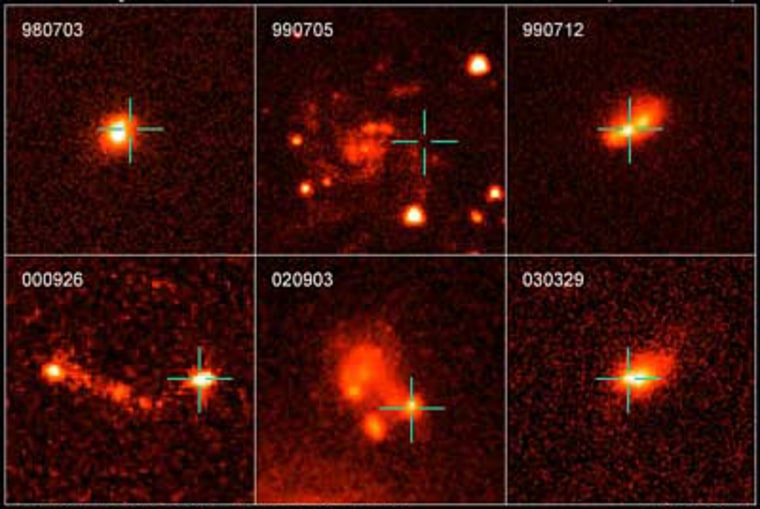You can remove one potential threat from your worry list, based on new observations by the Hubble Space Telescope.
The observatory has been used to study long-duration gamma-ray bursts, which are powerful flashes of high-energy radiation that emanate from some exploding stars. Astronomers have said before that if one of these flared up in our neck of the woods, Earth would be toasted and much of life could be destroyed.
But it is unlikely one of these bursts will occur in our Milky Way galaxy, the new study finds.
The study, detailed in Thursday's issue of the journal Nature, confirms similar work done with other telescopes and .
Long-duration gamma-ray bursts (those lasting more than a couple seconds) are related to the deaths of huge stars, those at least 20 times as massive as our sun and which are low on heavy elements.
Such stars are uncommon in our galaxy. They were prevalent when the universe was young, before multiple generations of stars created the heavier elements such as carbon and oxygen that are common to our galaxy. The Hubble study found the events tend to emanate from small, irregularly shaped galaxies — those seen to exist before mergers had created the larger galaxies seen in the nearby cosmos.
The upshot: Long-duration gamma-ray bursts tend to come from very, very far away, which in cosmic terms means they occurred long, long ago and the radiation is just reaching us after billions of years of traversing the universe.
Of 42 bursts studied, only one came from a large spiral galaxy like the Milky Way.
Modern massive stars, which are abundant in heavier elements, are unlikely to trigger long-duration gamma-ray bursts, also called GRBs, the researchers explain. By the time they explode as supernovae, these stars have already lost significant material through long-term outflows called stellar winds. There is not enough mass left to create a burst when they go supernova.
“It’s a Goldilocks scenario,” explained study leader Andrew Fruchter of the Space Telescope Science Institute. “Only supernovae whose progenitor stars have lost some, but not too much, mass appear to be candidates for the formation of GRBs."
Short-duration gamma-ray bursts, lasting less then two seconds and sometimes just milliseconds, can occur in our galaxy. Collisions between neutron stars can create them, for example. They are 100 to 1,000 times less powerful, however.
